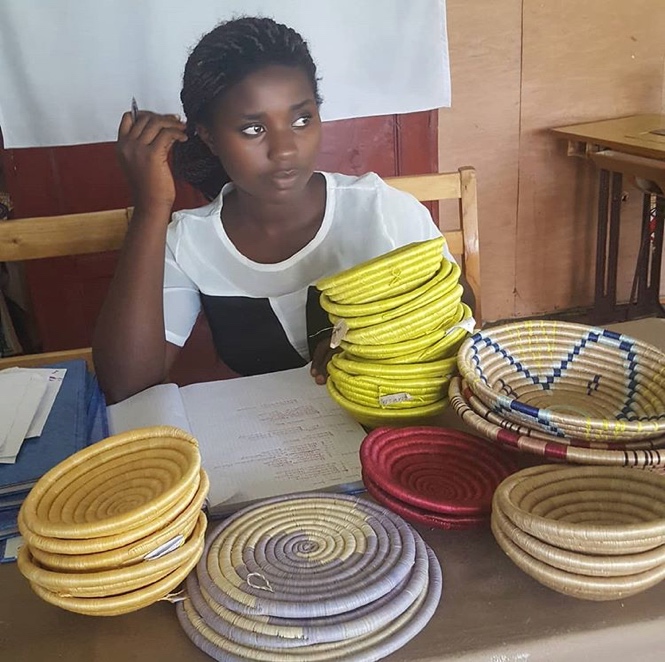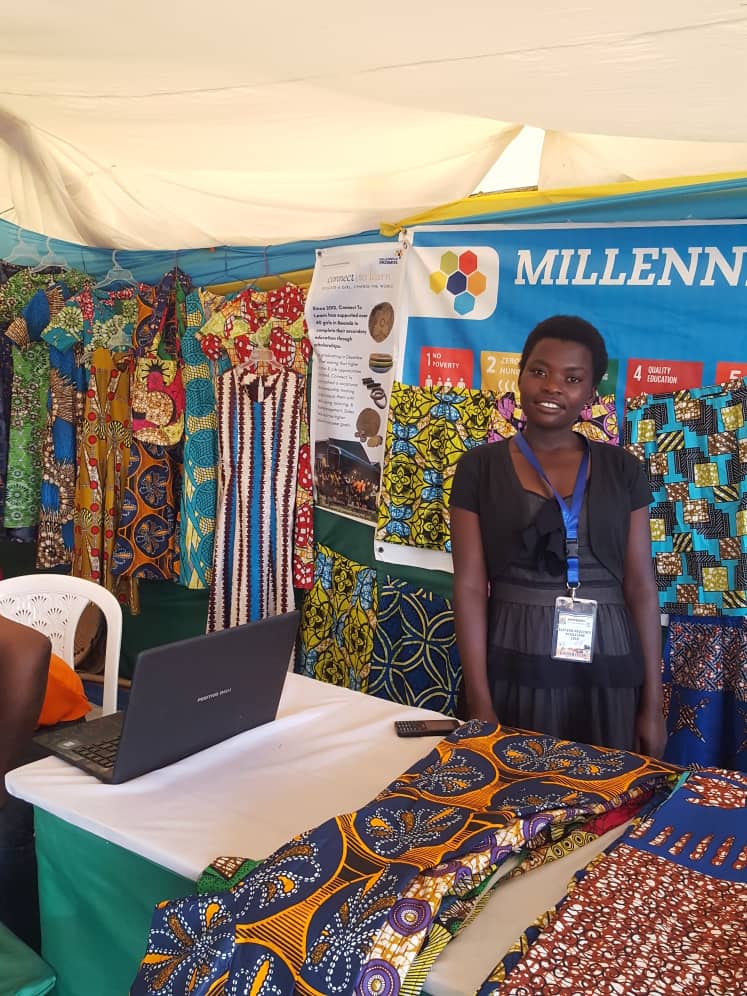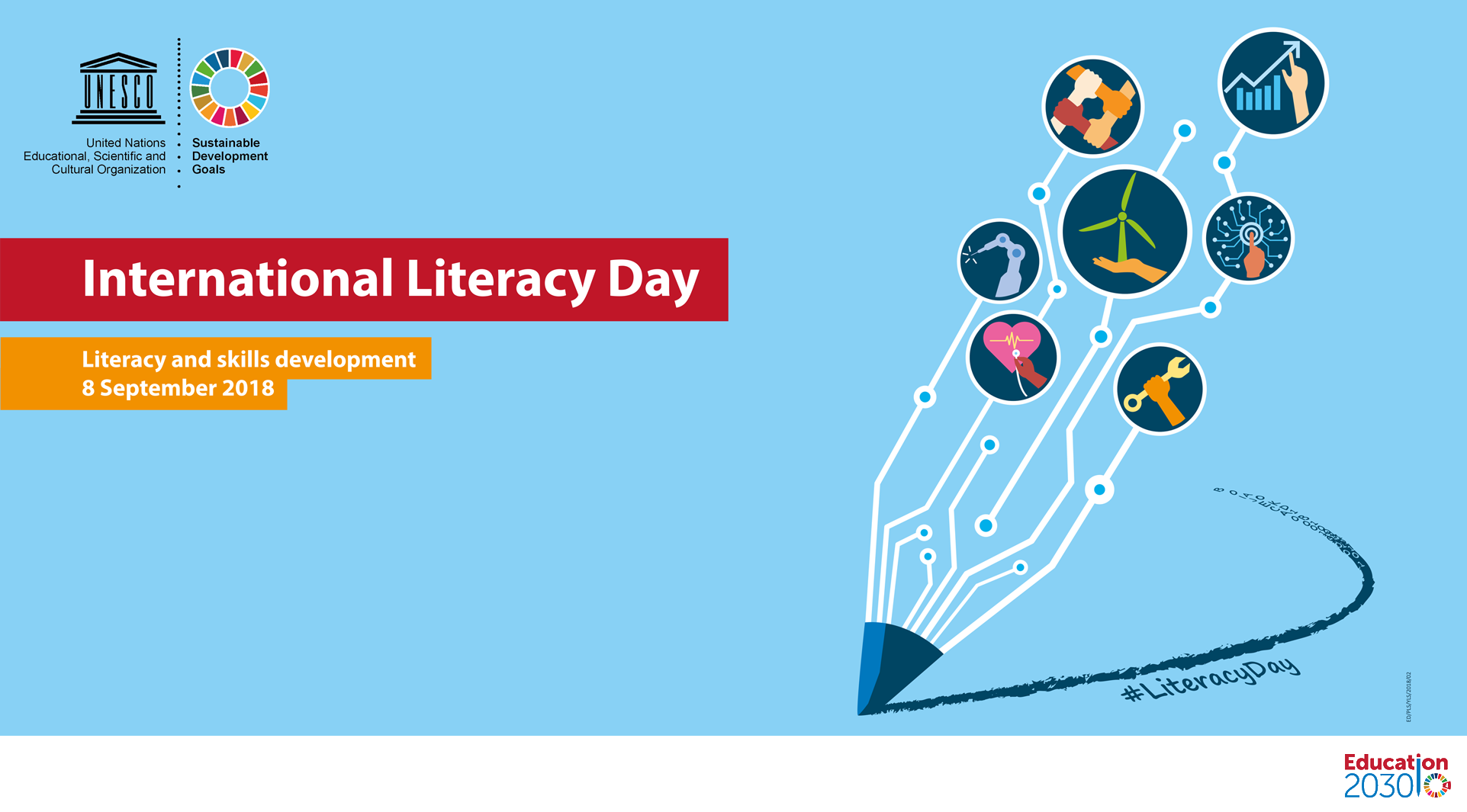Celebrating Different Literacies for International Literacy Day
This NORRAG Highlight is published on the occasion of International Literacy Day, celebrated annually on 8 September. Tara Stafford Ocansey is the Senior Education Technology Specialist of the Connect To Learn initiative of the Center for Sustainable Development, Earth Institute, Columbia University. Connect To Learn – a partnership of the Center for Sustainable Development, Millennium Promise and Ericsson – is a global education initiative that aims to address the lack of universal access to quality education, with an emphasis on the marginalized (especially girls), in resource-poor settings globally. In this blog post she explains some of the achievements of Connect To Learn to equip young people with skills that go beyond traditional foundational skills of reading literacy.
This Saturday, September 8th, is International Literacy Day, a day for governments and civil society around the world to celebrate and reflect on progress made toward addressing the nearly 14% of the world’s population above age 15 who lack literacy skills, a majority of whom are women.[1] With this year’s theme of Literacy and Skills Development[2], we must consider the different kinds of literacy that are needed for success in today’s world beyond the foundational skill of reading literacy. Today’s economic, social and cultural demands require not only mastery of reading, but also media and digital literacy as well as a broad set of life skills that enable continuous learning, adapting and innovation. Sustainable Development Goal 4 on Education recognizes these needs by setting targets to ensure youth and adults gain relevant technical and vocational skills (4.4) and skills to promote sustainable development (4.7), in addition to ensuring all youth gain literacy and numeracy skills (4.6). d

CTL Graduate Vestine Mukeshimana completes paperwork to prepare an international order. Photo Credit: Fidela Mokandinda
Connect To Learn has worked since 2011 to improve the quality of education for youth – especially girls – in some of the most remote corners of the world where literacy rates are particularly low. It is not uncommon in the schools where we work to see students entering secondary school barely able to read in their language of instruction. We work on numerous fronts at the primary and secondary levels to improve the quality of teaching and learning during the school day. One key lesson we have learned is that, even with the strong foundation in literacy skills and academic subject knowledge that comes with a secondary education diploma, many young people graduate without the skills or financial resources to further their education or find jobs. To illustrate this point, among two cohorts of graduates from Ghana and Tanzania who graduated between 2013-15, data collected six months to one year after graduation show that among 123 graduates, only 11% were enrolled in some kind of higher education or training program, and just 13% were employed at least half-time. The jobs that are available and will become available in the near future demand a host of other literacies that our education systems are struggling to keep up with. It is for these reasons that Connect To Learn has expanded its programming areas to equip secondary school students and recent graduates with skills in areas including cyber wellness and digital literacy, financial literacy and entrepreneurship.
In Rwanda, a group of 37 young women who graduated from secondary school in December 2017 have just completed 8 months of vocational skills training in areas of weaving and tailoring. The vocational training program was developed as a direct response to requests from the girls and their teachers during secondary school, who were keenly aware of the challenges the girls would likely face after graduation. Teachers from the two schools attended by Connect To Learn scholarship students put together a proposal and budget to support a three-month vocational training program between the girls’ second and final year of senior secondary school. The training was so well received that plans started to form to continue their training after graduation.

Solange Nyiransengimana poses in front of her booth at the Nyagatare Provincial Exhibition in August 2018. Photo Credit: Vestine Mukeshimana
Beyond these traditional vocational skill areas, the young women have developed their digital literacy through training in photography and marketing which they have put to use in growing a large following on an Instagram account they created to promote their products. They have nurtured their financial literacy skills by using financial planning tools to plan for their business startup costs, by learning to conduct international business using platforms like Western Union, and by developing order and invoice forms that they used to participate in a local exhibition event where they shared their offering with local buyers and political leaders. And they have continued improving their English literacy skills by engaging directly with international partners and clients over platforms like WhatsApp and Skype. The program has evolved organically as the young women and members of the Connect To Learn team seek to identify opportunities for the young women to practice these various skills through events, mentorship, and sales opportunities.
As the training comes to a close, the group of young women are taking the necessary steps to incorporate their new cooperative called “Visions Connect To Learn Cooperative.” One of the new cooperative’s elected leaders, Vestine Mukeshimana, described her experience at the recent exhibition by saying “we are getting more ideas for making different designs that are popular among women and girls… we are getting a greater vision of what our training group can do.” She says their future plans include attending an Exhibition in Kigali where they will find more clientele interested in purchasing their products.
This International Literacy Day, let’s honor and celebrate all the work being done to promote the numerous literacies that our world’s youth and adults need to thrive.
Contribute: The NORRAG Blog provides a platform for debate and ideas exchange for education stakeholders. Therefore if you would like to contribute to the discussion by writing your own blog post please visit our dedicated contribute page for detailed instructions on how to submit.
Disclaimer: NORRAG’s blog offers a space for dialogue about issues, research and opinion on education and development. The views and factual claims made in NORRAG posts are the responsibility of their authors and are not necessarily representative of NORRAG’s opinion, policy or activities.
[1] https://data.worldbank.org/indicator/se.adt.litr.zs
[2] http://www.un.org/en/events/literacyday/


This is an excellent blog, with one exception. There is no such thing as multiple literacies or different literacies. This very popular term merely reflects ignorance about reading automaticity. And the lack of knowledge has program implications.
The brain has a function called perceptual learning, which connects small visual features into larger ones. Examples are musical notation, perceiving and interpreting math equations, footprint reading by aborigines, x-ray detection, air traffic control patterns or reading of words in various scripts. People read effortlessly in a script if they can process multiple letters in parallel effortlessly. This is the one and only literacy for words. Reading digital media or for various contexts merely means reading faster or recalling certain interpretations faster in mind than others. There is no difference in parallel processing of words. The only way to use ‘multiple literacies’ would be (maybe) literacies in different scripts and automaticity in musical notation, or air traffic control.
Thank you, Helen, for this valuable feedback. This scientific explanation of how we learn to read serves as the foundation of our programs in early grade literacy which we have implemented in Telangana, Malawi and Rwanda. This blog is focused on our programs for older youth who already have a decent foundation in reading automaticity, having graduated senior secondary school. The programs described in this blog are focused on building practical skills for income-generation, including skill sets commonly referred to as financial literacy and digital literacy. These incorporate higher order thinking and capability to critically analyze texts. Since our students are very well versed in Kinyarwanda we are focusing on English as a second language. Our program has elements that help emphasize continued reading practice in English through communications activities with program staff and mentors over platforms like WhatsApp and Skype.
Perhaps referring to financial and digital skill areas as their own kinds of “literacy” can be viewed as a distraction from the definition of literacy as the ability to read. We believe however that there is value in focusing on all of these skill areas for youth who have already developed a strong foundation in reading, and are seeing how the program highlighted in this article is having real impacts in the girls’ lives through income earnings and generating new business contacts.